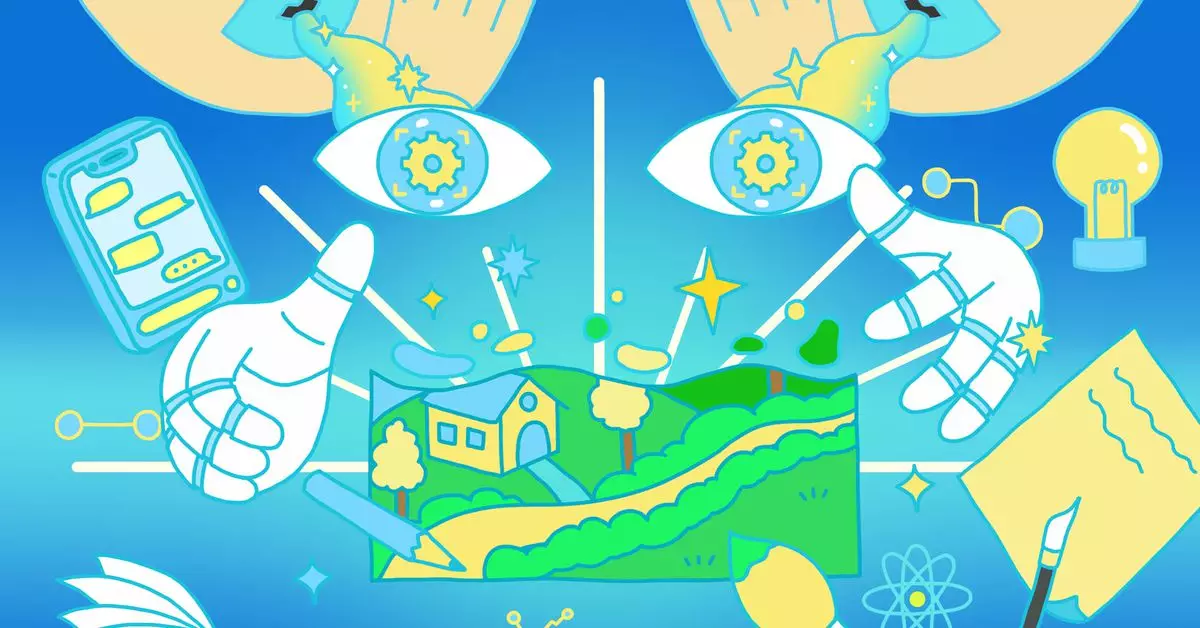In the rapidly evolving world of photography, the introduction of artificial intelligence (AI) has sparked not only excitement but also ethical dilemmas. Apple, a titan in the tech industry, is now embarking on a quest to redefine the way we interact with images. Amidst mounting pressure from competitors, Apple has recently introduced its AI-powered features within iOS 18.1, culminating in an innovative tool aimed at editing without compromising authenticity. This shift raises essential questions about the role of technology in photography and the responsibility companies hold in relation to the editing capabilities they provide.
One of the standout features of iOS 18.1 is the “Clean Up” tool in the Photos app, which allows users to remove unwanted objects or individuals from their images. Apple’s software chief, Craig Federighi, has emphasized the importance of maintaining photo integrity amidst the growing temptation to manipulate reality. While rivals, like Google and Samsung, have developed robust AI-editing functions that can add fantastical elements to images, Apple has taken a more conservative approach, perhaps in an effort to steer clear of the pitfalls that come with overflowing creativity in image editing.
Federighi’s reservations are clear. His comment, “Do we want to make it easy to remove that water bottle, or that mic?” underscores the company’s internal debates regarding the responsible use of technology. The aversion to altering critical details in a memory is commendable. The “Clean Up” feature represents a delicate balance between allowing users to refine their photos and ensuring that the fundamental truth of the image remains intact. While the limited capabilities of this feature may frustrate some users, it represents a thoughtful approach to digital editing.
Apple’s cautious approach serves as a vivid reminder of the broader implications of AI in photography. The development of potent AI tools that can convincingly fabricate images has sparked considerable debate among creators and consumers alike. Federighi points to the necessity of maintaining trust in photography; an image should be regarded as an accurate representation of an event, not an artist’s canvas to paint over with fantasy elements.
The ethical implications stretch beyond personal use—these tools have the potential to shape public perception and truth. With the rise of easily manipulated photographic content, particularly in today’s digital age, where misinformation is rampant, Apple’s stance sends a strong message about accountability in technology. The implications for news media, social platforms, and digital communications are profound. If users perceive photographic content as easily altered, the very nature of facts may come under threat.
In a bid to distinguish between genuine photographs and altered versions, Apple has implemented a metadata tagging system. Images edited with the “Clean Up” feature will be labeled as “Modified with Clean Up,” allowing users to assess the authenticity of what they see. This metadata not only promotes transparency but also allows Apple to take part in the larger conversation around content integrity—a pressing issue faced by the digital content industry.
Similarly, other major players like Adobe have launched initiatives, such as the Content Authenticity Initiative, geared towards curbing misinformation within digital art forms. The success of these initiatives hinges on industry collaboration—an effort that Apple appears to be cautiously joining, though it remains to be seen whether their system will be interoperable with existing standards.
As the realm of photography intersects with artificial intelligence, companies like Apple are finding themselves at a crossroads. The introduction of features like “Clean Up” exemplifies a thoughtful and responsible approach to innovation, one that prioritizes ethical considerations over aesthetic freedom. With trust in photographic content at stake, Apple’s narrative is compelling, urging the industry to focus on authenticity amidst the digital landscape’s allure of manipulation.
While exciting advancements offer a glimpse into the future of image editing, the ethical framework surrounding these technologies will ultimately define their place in society. As policymakers, technologists, and consumers engage in continual discourse, the quest remains: how can we leverage AI to enhance creativity without losing sight of integrity in our visual narratives?


Leave a Reply